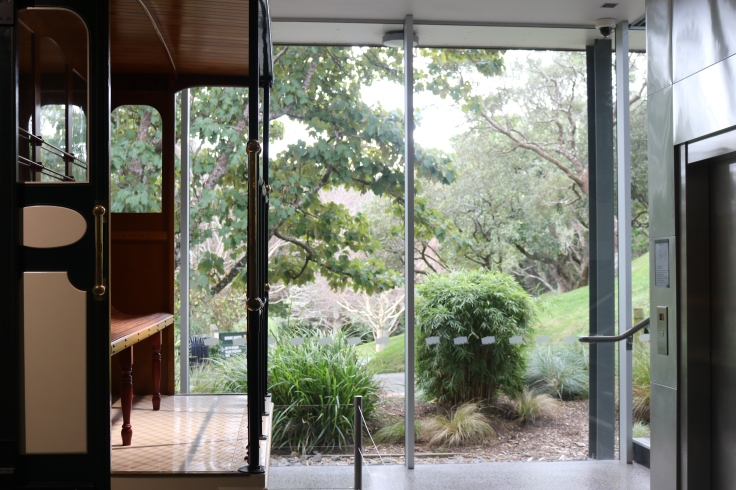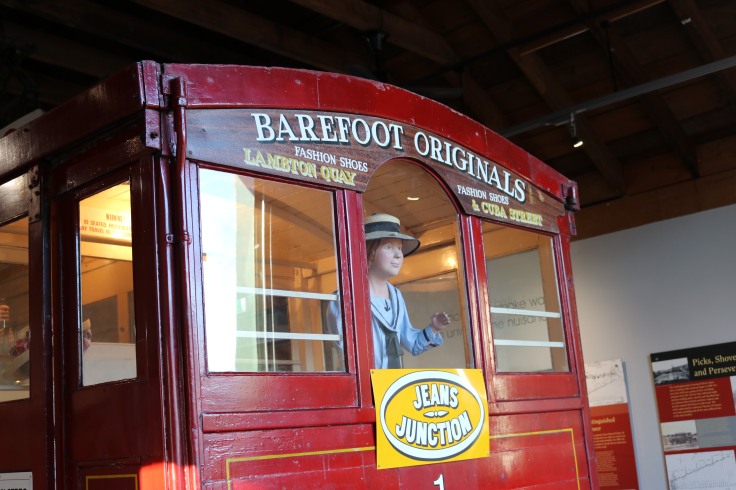By Tamsin Falconer, Museums Wellington Project Manager
Recently, I’ve been looking at visitor data from the Cable Car Museum to inform our plans for future changes. As the Museum welcomes more than 200,000 visitors a year, it’s difficult to find out what each visitor thinks, or even where they all come from. Instead, we use surveys to get a sample of visitor information and feedback. I’ve been looking at the information from online sources such as Trip Advisor and two in-house surveys – one is done in March/April – a person-to-person survey, using the same questions as other museums throughout Aotearoa, the other is on an iPad that visitors can answer any time.

The surveys tell us some interesting statistics, including:
- 16% of our visitors have visited before. Except that if we look at the other survey, we know that 28% of our visitors have visited before. Is this because the surveys are done at different times of year? Anyway, why did people come back for another visit?
- According to the survey data, repeat visitors are mainly from elsewhere in New Zealand, not local to Wellington. But our staff recognise repeat local visitors, and know them. Are they a small but very visible group? Or are they just not answering the surveys? How much weight should we put on statistics from surveys, when it contradicts the impressions of our staff who actually talk with people?
- In the 2016 survey, 33% of visitors who ‘usually live’ in New Zealand were born overseas. We ask where New Zealanders were born because it is part of a national survey, and it’s really helpful to have exactly the same questions asked at each museum. But I’m not sure what we would do with this information, and the question feels a little bit intrusive.
So while the surveys give us some numbers, they also raise as many questions as they answer.
The surveys also ask a couple of questions that don’t provide percentages: what were the highlights of your visit, and what are your suggestions for improvements. At first glance, some of the answers seem totally irrelevant. But as I’ve thought about it more, even the seemingly irrelevant stuff has something to say.
For instance, visitors’ highlights of their visit to the Cable Car Museum included ‘The Lady Norwood Rose Garden’ and ‘the view from the summit point’. The rose garden is in the Botanic Gardens, as is the Cable Car Museum, but unlike the summit point, it’s a good walk to get there. Why did visitors (more than one) list this as a highlight of a visit to the museum, when it’s not even close? Visitors also told us that they wished it was ‘less expensive’ (the Museum is free – but the Cable Car ride costs).

It would be easy enough to dismiss these ideas as responses from people who weren’t listening to the questions. But from the visitor perspective, their highlight was the rose garden or the view, and the Cable Car ride was part of the experience too – they clearly see these as elements of the same experience that includes the Museum. To me this suggests we should start to think entirely differently about what’s inside and outside the Museum, rather than thinking of the Museum as a distinct individual entity, we should think about it as part of a network of things that people enjoy.

Suggestions for improvements to the Cable Car Museum include ‘fewer children’. Wow! This one seems impossible to deliver on, or even take seriously, because we actually would love to see more children. And more adults. But it is true that groups of children in the Museum can sometimes make a lot of noise and take up a lot of space, particularly if they’re enjoying themselves and telling each other about it! While some adult visitors enjoy this, we know that others find this taxing. This comment leads me to think about what we could do to lessen any negative impact on other visitors. Can we advertise or schedule quiet times in the Museum, when school groups tend not to book anyway? Can we put up signage so that other visitors know immediately that there is a group of children in the museum? Should we have a specific area for noisy or child-focussed activities?

Other highlights included ‘Cable Car displays’ and the suggestion of ‘more exhibitions’. This is where looking at the answers to brief surveys becomes frustrating. While these come across as positive feedback, I can’t help wishing I was there asking the questions so I could find out something more specific that we could explore.

So, really the key is that there’s some great stuff there. But to know more, we need to take the ‘wrong answers’ and use them as prompts for better, longer conversations, making sure we talk to people who don’t answer the surveys as well as those who do. We can use the survey data as conversation starters. “A lot of people say they would like to see more exhibitions – what do you think is missing?”, “Did you come to see the Botanic Garden or the Cable Car Museum or both?”
So next time you’re at the Cable Car Museum – come and have a conversation – we’d love to know what you think.


Leave a comment